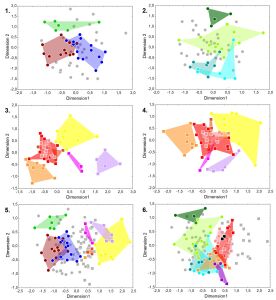Museum of Anthropology and Ethnography (Kunstkamera) RAS, St.-Petersburg, Russia
E-mail: kazarnitski@mail.ru
Keywords: craniology, craniometry, population history, migrations, the Bronze Age, the Abashevo culture, archaeology, Europe.
Craniological materials from the Abashevo culture are rare. A selection of skulls from the Pepkino mound in Chuvashia has long been known. Relatively recently, craniometric data of Abashevo culture bearers from the territory between the Volga and the Urals have been published. These are all the samples available today, with the exception of a few individual skulls from other sites. The origin of the Abashevo culture based on archaeological data is ambiguous: it may go back to the preceding Fatyanovo culture of the Upper Volga region or to some local groups of the Pit Grave (Yamnaya) culture, or else it may be the result of western migrations. The article considers the issue which of the archaeological hypotheses does not contradict the patterns of craniological variability of the European population of the Neolithic, Chalcolithic and Bronze Ages. The author employs craniometric data on a large number of European groups to search for the influence of migrations on the composition of the Abashevo population and other Bronze Age populations of Eastern Europe. It is argued that there are similarities between the series of skulls from the Fatyanovo sites and the eastern local groups of the Corded Ware culture. At the same time, there are no Western features in the craniometric characteristics of the two Abashevo series. The closest analogies of the latter can be observed among the population of the steppe and forest-steppe zones of Eastern Europe of the Chalcolithic and Bronze Ages.
DOI: 10.31857/S0869606324010026, EDN: ZWRPBW








